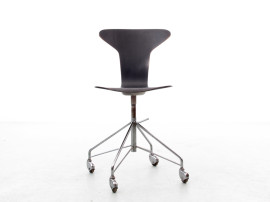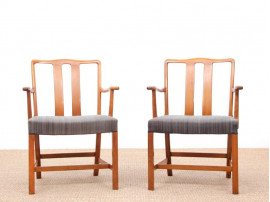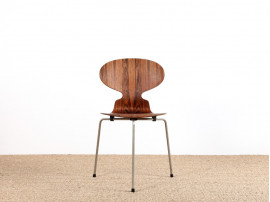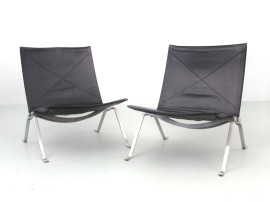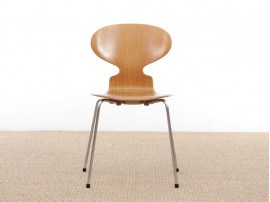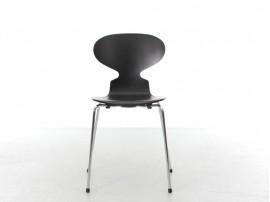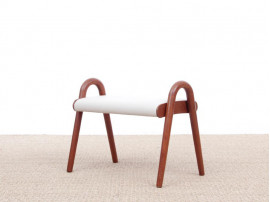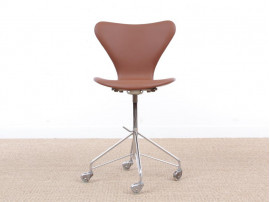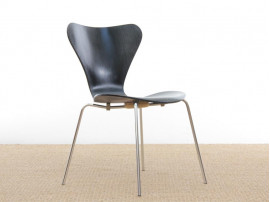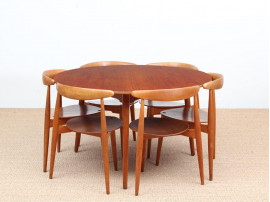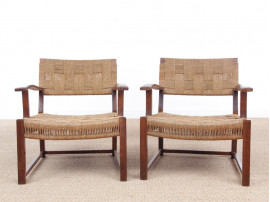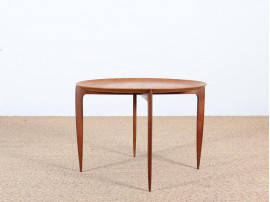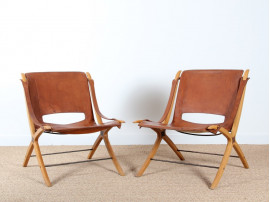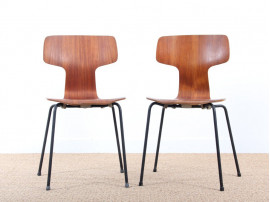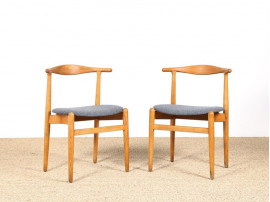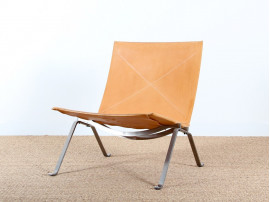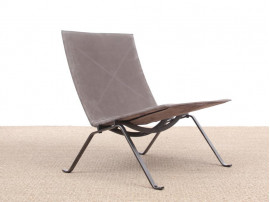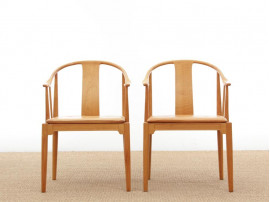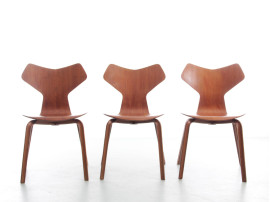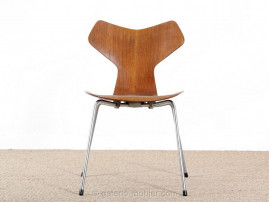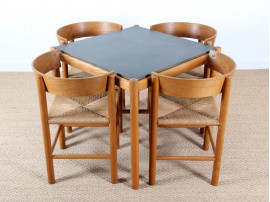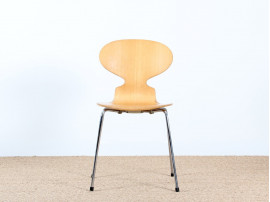
Fritz Hansen
Overall history
1872 – 1929
The history of Fritz Hansen begins in 1872, when the enterprising cabinet-maker Fritz Hansen from Nakskov obtains a trade license in Copenhagen. 1885 is a decisive year, in which he starts his own furniture production company and two years later he has established a flourishing workshop in Christianshavn – a central part of Copenhagen. Fritz and his son Christian introduced the standard of high quality that has been the trademark of Fritz Hansen’s products ever since.
The long list of prestigious orders from the first fifty years of the company's history demonstrates the strength of the Fritz Hansen reputation at the beginning of the 20th century. Buildings furnished by Fritz Hansen include Christiansborg, The University Library, Copenhagen City Hall and The Supreme Court and other significant projects.
1930 – 1939
Early in the century, the forward-looking Christian E. Hansen, son of Fritz Hansen, starts to experiment with steam bending beech. In the Thirties the technique is so refined that Fritz Hansen is among the world leaders in the field, which later evolves into the firm’s speciality: Furniture created in laminate wood.
As an adjusted variant of Germanic functionalism, the purer lines and the lighter, more practical approach became the breakthrough style in Scandinavia. At Fritz Hansen, the first Danish steel furniture was launched, as well as the famous Church chair by Kaare Klint, which remains in the Fritz Hansen collection from 1936 to 2004.
1940 – 1949
Despite difficult times during the decade of The Second World War, the Fritz Hansen factory is expanded. Some particularly hard, cold winters see many of the Danish walnut trees succumb. Fritz Hansen buys a great amount of the wood and takes advantage of the situation: A new furniture series in walnut is introduced. The initiative receives great press attention and is a success.
The first classic of the decade is the China™ chair from 1944, designed by the progressive architect Hans. J. Wegner. The chair is a sculptural celebration of wood and the fine craft of furniture making. The second classic to see the light of day is the spoke back sofa by Børge Mogensen in 1945, which is later re-introduced as the most Danish sofa of all sofas.
1950 – 1959
Arne Jacobsen totally dominates the Fifties at Fritz Hansen. The collaboration started in 1934, but the breakthrough comes when he creates the laminated Ant™ chair. The chair later gave rise to the never-ending success story of the Series 7™ chair – and other pressure moulded veneer chairs. The inspiration for the Ant came from Hvidt & Mølggard’s AX-series, and the introduction of the lamination technique and separable furniture is still a milestone in the history of Fritz Hansen.
Arne Jacobsen shines even brighter with the creation of the classic style icons, the Egg™ and the Swan™ designed for Royal Hotel in Copenhagen. The introduction of his series 3300™ just adds to the myth. Verner Panton also appears on the scene with the Bachelor chairs. But the decade belongs to Arne Jacobsen.
1960 – 1969
In 1963, the factory in Allerød is expanded with three factory halls and in 1965 the administrative department moves from Christianshavn to the renovated buildings in Allerød, which also include a showroom.
The democratic table with no ends, the Superellipse™ table, and the span-leg table are designed by Bruno Mathsson and Piet Hein and becomes one of Fritz Hansen’s greatest successes. Just as successful is the re-introduction of Børge Mogensen’s ‘Tremmesofa’ and Hans Wegner’s China chair. The Arne Jacobsen models also strongly dominate this period.
1970 – 1979
This decade brings great changes to Fritz Hansen: On the first working day in 1979, Fritz Hansen announces that the 107 year old firm is no longer in the hands of the family. 75% of the Fritz Hansen shares are now owned by Skandinavisk Holding.
The enfant terrible of Danish design, Verner Panton, becomes leader of the avant-garde, provoking and inspiring in the service of Fritz Hansen. His prominent role results in praise from the press. The attempt to guide interest back to Arne Jacobsen and the other classics is initiated and comes to fruition a few years later.
1980 – 1989
Through substantial investments and thorough reconstruction work the new owner, Skandinavisk Holding, succeeds in strengthening Fritz Hansen and preparing the old company for the future.
An exhibition consisting only of new Fritz Hansen models, shown during the Furniture EXPO 1983 at the Bella Center, a trade fair and convention centre in Copenhagen, becomes a convincing manifestation that the old firm isback on the scene and is recapturing the position as Denmark’s leading furniture company.
Fritz Hansen purchases the minimalistic Kjærholm Collection with an industrial dimension, which Poul Kjærholm designed from 1951 to 1980. Together with the purchase of the KEVI collections and Munch Møbler it results in increased sales and interest in Fritz Hansen as well.
1990 – 1999
Expansion became one of the keywords for this decade as well. Fritz Hansen now focuses primarily on five utility areas: Canteen, conference room, resting/waiting areas, office chairs and finally private spaces. In 1998, another factory is purchased in Vassingerød. Here, the newly decorated rooms are converted production areas, a showroom and a small museum displaying ‘the course of history’.
The period is marked by a focus on office chairs and the introduction of the Ensemble-series by Alfred Homann, chairs and tables by Vico Magistretti, the Click-table series and screens from Art Andersen & Copenhagen.
2000 –
The introduction of the concept Republic of Fritz Hansen™ marks a change in strategy. The message is that furniture from the Republic of Fritz Hansen is an important part of the image of companies and private customers who are looking to express their individuality and make unique statements.
The Republic of Fritz Hansen invites a series of new designers to interpret the design philosophy of Fritz Hansen. The Ice-series by Kasper Salto and Plano by Pelikan Design is introduced and lives up to the high expectations.
The revitalization of the Oxford-series and initiatives for the fiftieth anniversary of the Series 7™ seem very promising. Several radical changes are made to production development and the introduction structure of new designs, and coherent campaigns are introduced on a regular and yearly basis.

